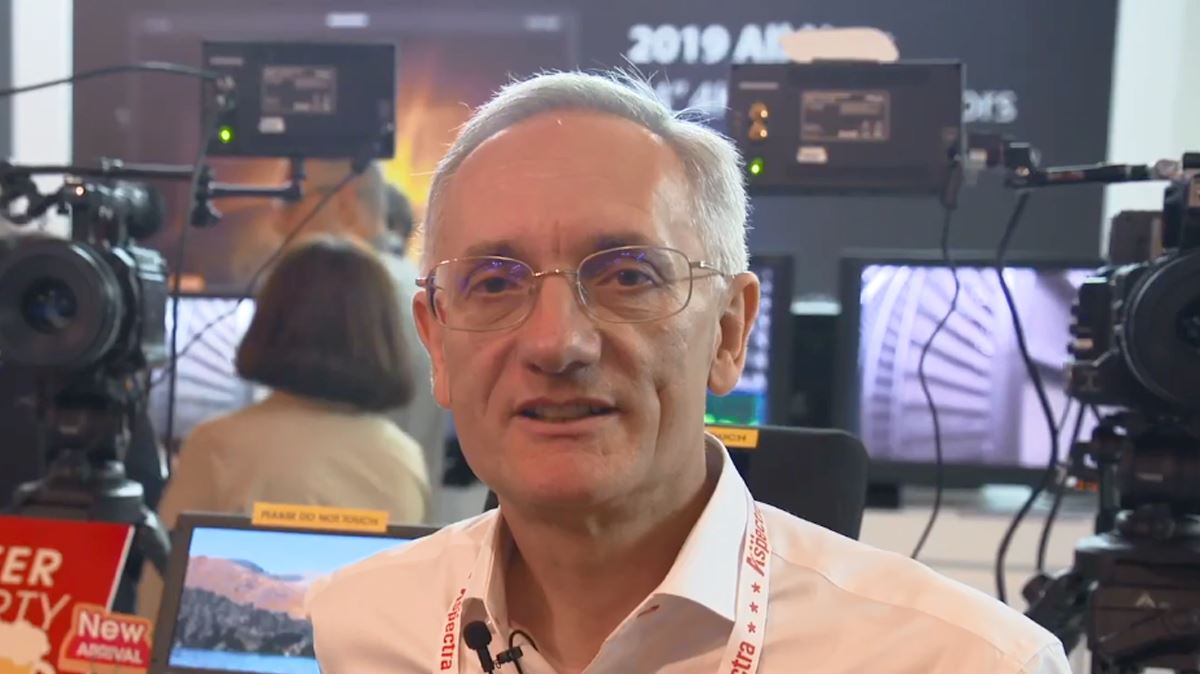Part 1 Expert article: Stefan Czich about working in the broadcast and post-production industry and the importance of monitor support
Working with a lot of different customers he knows their daily challenges in this rapid changing industry.
Stefan Czich has been working for more than 20 years in the production side of the broadcast and television industry and more recently in post-production. As an international Sales manager he worked for different broadcast and manufacturing companies. Working with a lot of different customers he knows their daily challenges in this rapid changing industry.
‘During the years I had the opportunity to work with a lot of great people and it has been real fun.’ About the question, why he chose this field of work, he gave a short answer:
‘To be honest with you… I needed a job. A company local to me, a broadcast distributor, selling Fujinon lenses at the time, was looking for a technical sales-person. I was originally trained as an electronics engineer.'
‘Photography was my hobby for a very long time. As a lens reseller I fitted the bill quite nicely.’
‘At the time I thought: It pays okay, the company car is dreadful, it is a job that I will do for about 3 months and then I’ll find something that I enjoy more. The very first week that I was there, we ended up fitting infrared cameras on top of the main studio cameras, at the big ITV studios in London. The idea was to film a game show that was set in the dark. It was lit only with infrared. That was quite novel technology at the time.’
‘It was hosted by Julian Clary, who is tremendous fun, but quite risky. The show never did well as a program within UK. But internationally in particular places like Italy and Australia, it ran for many series and it was very popular.’
‘Partway through rigging the cameras onto the lenses, I bumped into the producer. He was walking through the studios with a big box of rubber earwigs and spiders, things like that. I thought: what on earth are those for? He said: Well they are for the audience. At some point while the audience is sitting there in complete darkness, they ask a question: What would it be like if a creepy crawly fell on your head? Then they release these things from the lighting gantry.’
'Absolute pandemonium. I thought at that stage, it could be quite fun working in this industry and so I have stayed.’
The importance of monitor support
For Stefan it all began in the production side of the industry, more recently he worked in the post-production side of the industry. What stayed the same for him is advising customers about the best monitor for their needs.
‘What most people don’t notice when buying a monitor or any product, are the things that aren’t in the box.’
‘If you buy a good product, you will get a nice product in the box and you get it for a reasonable price. But if you buy a really good product, it’s got backing behind it. With a technical product, you always want to ask the question: do you get free software and firmware updates? This way it will always work at peak performance. If there is a problem with the product: what happens? Do you have decent warranty support? These are the sort of things that people, who just buy at a low price, often lose out on.’
‘The first and foremost feature to take notice of when buying a monitor, is picture quality.’
‘A thing to take notice of: Do you have the right resolution and are the colours correct? Does it show the whole picture? Some of the low-cost monitors don’t under scan properly, you actually can’t see the whole picture. That can lead to framing issues or mic poles creeping into shot. That’s one of the key features everyone should keep in mind buying a new monitor.'
'Beyond that, the most important features will depend on what you are doing with a monitor. If you’re working outside, high brightness is important. If you’re working in a grading suite, really accurate colour reproduction is more important.’
Shifting customer needs
‘Over the years technology and the needs of customers have changed a lot compered to let’s say 15 years ago,when I started selling TVLogic.The big thing that I noticed was the change to the flat screen. It’s a lot smaller and lighter for any given screen size and much more portable.’
‘Because we moved from CRT technology to LCD, the products are much more stable. You don’t need realignment every time you move them. We moved from standard definition very quickly to HD and UHD is now becoming the standard for production.’
Read Part 2 of this article to find out more about the perfect monitor, trends and what to expect in the future!
Learn more about TVLogic!


